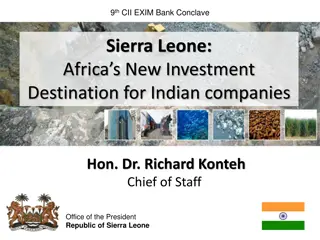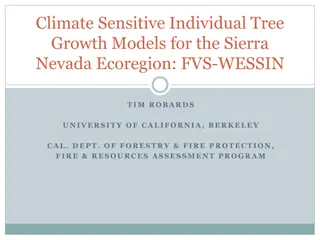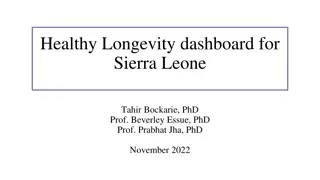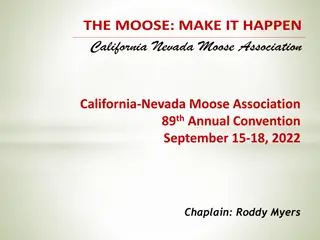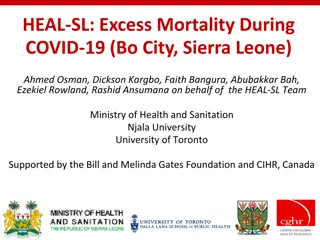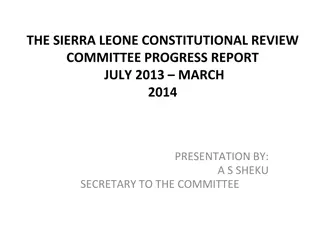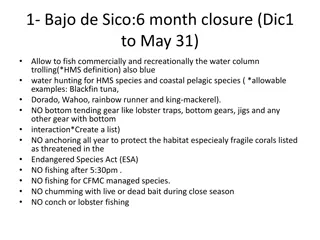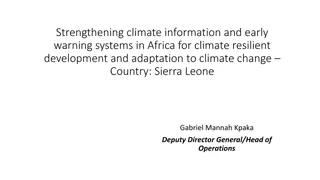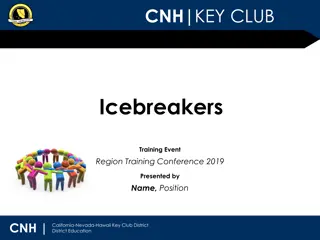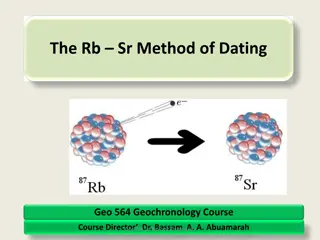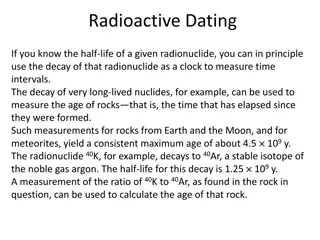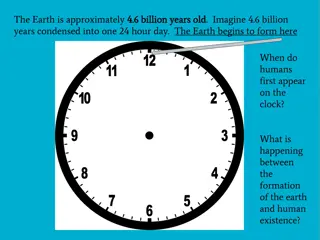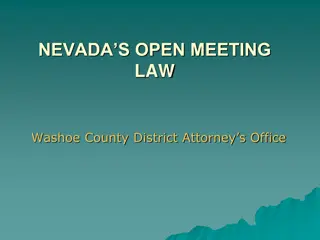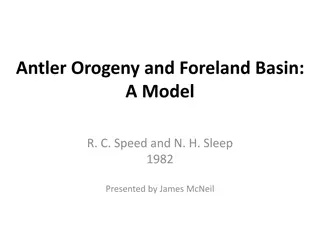Dating Topography of the Sierra Nevada, California with Apatite (U-Th)/He Ages
Utilizing apatite (U-Th)/He ages, this study explores the topography of the Sierra Nevada in California. By analyzing age variations between ridges and valleys, researchers estimate the timing of incision and total relief of the mountain range. Results suggest minimum age of river incision as 70-80 million years ago. Sample locations, geothermal gradients, and thermal histories play crucial roles in determining past topographical evolution.
Download Presentation

Please find below an Image/Link to download the presentation.
The content on the website is provided AS IS for your information and personal use only. It may not be sold, licensed, or shared on other websites without obtaining consent from the author. Download presentation by click this link. If you encounter any issues during the download, it is possible that the publisher has removed the file from their server.
E N D
Presentation Transcript
Dating topography of the Sierra Nevada, California, using apatite (U-Th)/He ages House, M.A., Wernicke, B.P., Farley, K.A., 1998. Dating topography of the Sierra Nevada, California, using apatite (U-Th)/He ages. Nature 396, 66- 69. Presentation by: Kurt Kraal
Goal: Use apatite U-Th/He ages to date topography of the Sierra Nevada: U-Th/He is a thermochronometer, which gives an age for when the apatite goes below 75 oC Thermal histories derived from this technique can be used to estimate timing of incision, as well as total relief of the mountain range They do this by looking at samples from ridges and valleys, which should have different cooling histories, which can be described using the following equation based on thermodynamic principles:
T = Temperature in shallow crust below a topography x and z are horizontal and vertical distance hois amplitude, is wavelength of topography pHs=radioactive heat production, qm = reduced heat flow Ht = characteristic depth of heat production To is 15oC, z = o km, beta = lapse rate of mean surface temperatures
Age variations between ridges and valleys (R and V) should be detectable with U-Th/He dating Age variation is strongly dependent on h0 Less dependent on wavelength (lambda) Horizontal age profiles should be able to constrain paleotopography, where the oldest ages will date minimum age for river incision, and delta t would be used to estimate h0,if cooling history and geotherm are estimated
Sample Locations 36 samples along a 200 km range parallel transect crossing points of maximum valley incision at 2km in elevation Total erosion and erosion was estimated from previous studies Geothermal gradients were estimated based on previous papers K is Kings Canyon, S is San Joaquin
Results A: Helium ages along the range profile. B: current elevation and sample locations Oldest ages occur in San Joaquin and Kings drainages suggesting that these were likely the oldest drainages Minimum age of incision estimated as 70-80 ma based on oldest ages in Kings and San Joaquin
Results Based on the equation discussed earlier, multiple assumptions, and the drainage amplitude (long wavelength of 4 km, delta t of 25 myr, derived from Ho), as well as how the range crest is likely higher than the drainages, the Cretaceous elevation of the Sierran crest was estimated to be ~ 4.5 km, similar to modern central Andes
Summary of overall conclusions Sierra had Andean-scale topography sometime before 70-80 ma (based on minimum age of incision). By 70-80 ma the San Joaquin and Kings drainages had deeply incised the western flank of the range, after which the mean crestal elevation decreased from 4.5 km to 2.8 km, and long wavelength relief decreased from 3 km to 1 km.


